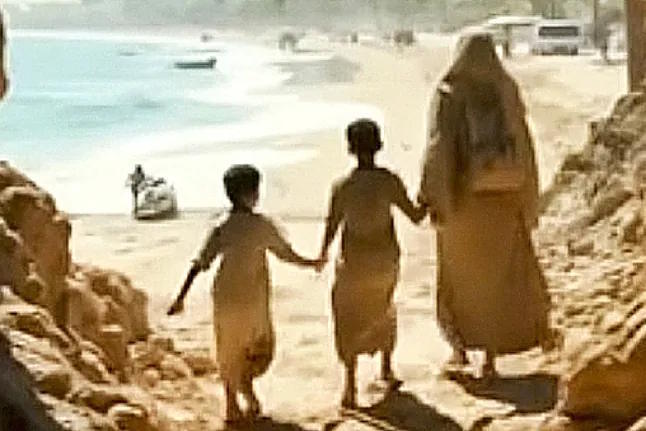The plan was simple: for 7,670 euros (9,000 dollars), between 500,000 and 575,000 Palestinians would be willing to leave the ruins of Gaza.
In the space they left behind, the 'Gaza Riviera' would be built, consisting of two parts. One would be a new Dubai, a city made up of luxury resorts, shopping centers, and millionaire residential areas. The other part would be a series of industrial zones for manufacturing electric cars for the European market, logistics centers (warehouses), and the development of fintech (technology and financial services fusion) and cryptocurrencies. The nearly two million Palestinians who did not leave would be confined to a kind of 'ghetto' under strict security conditions.
This is the plan that the strategic consulting giant Boston Consulting Group (BCG) designed between October and May in collaboration with the Gaza Humanitarian Foundation (GHF), a U.S. NGO that has been operating four humanitarian aid distribution centers in the enclave for six weeks. These facilities are protected by the Israeli Army and American mercenaries. Since they opened on May 26, more than 400 Palestinians have been shot dead there.
The plan is on hold. BCG has disavowed it and fired its executives who, they say, exceeded their roles and carried it out 'on their own', although other sources within the company claim that it was discussed at the company's executive levels and that it involved work valued at 4 million dollars (3.4 million euros).
However, the 'Financial Times', which uncovered and investigated it, reveals that the initiative had high-level contacts. The Tony Blair Institute for Global Change (TBI), established by the former British Labour Prime Minister in 2016 to "help leaders and governments achieve things," contributed a document titled 'Gaza Economic Draft' to the project. Initially denying the information, the TBI has admitted to the 'Financial Times' that, despite the report, they had no intention of participating in the project. The Institute receives funding from, among others, Blair himself, the U.S. Department of State, and the Governments of Saudi Arabia and Azerbaijan.
The project would have been presented to the Governments of Joe Biden and Donald Trump, and seems to align particularly with the latter's plans, formulated on February 4 during an official visit by Israeli Prime Minister Benjamin Netanyahu. The son-in-law of the U.S. President, Jared Kushner, who has significant economic interests in Israel and has received 2 billion dollars (1.7 billion euros) from the Saudi sovereign fund to invest in various projects, said in February 2024 that "Gaza's waterfront could be very valuable" if Israel temporarily expelled Palestinians "to the Negev desert". In that same month, Trump shared a video generated by Artificial Intelligence (AI) of Gaza transformed into a kind of Dubai featuring himself and Netanyahu in swimwear on the beach and Elon Musk strolling. A relatively similar idea, based on confining the 2.2 million Palestinians in Gaza to a small space, was proposed on Monday by Israeli Defense Minister Israel Katz, suggesting that the region's inhabitants be concentrated in the area occupied by the ruins of the city of Rafah. "They won't be able to leave there," Katz told the Israeli newspaper 'Haaretz'.
The whole idea seems to have started with a group of Israeli entrepreneurs, although it also involved the independent Israeli think tank Tiachlit Institute ("Purpose"), which was seeking to deliver humanitarian aid to Gaza, and the American military contractor Orbis, who contacted BCG.
The cost of 'Gaza Riviera' would be at least 17 billion euros, although the final figure could be several times higher. The 1.6 to 1.8 million Palestinians authorized to remain in the enclave - a figure based on those not displaced and between 75,000 and 85,000 of the evacuees who would be allowed to return - could reside in Gaza in high-density population areas and under constant security control.
The inhabitants of Gaza would only be able to enter 'Trump's Riviera', 'Trump's Islands', 'Elon's Zone of Smart Manufacturing', or the highways 'MBS Ring' and 'MBZ Central' under strict security measures - perhaps as unskilled workers - and their situation would be similar to that of Palestinians in the West Bank, who need permits not only to enter Israel but also to travel within that territory, or to the majority of non-white population in South Africa during apartheid.
